Libraries
About Andrew Cusack
 Writer, web designer, etc.; born in New York; educated in Argentina, Scotland, and South Africa; now based in London.
Writer, web designer, etc.; born in New York; educated in Argentina, Scotland, and South Africa; now based in London. read more
News
Blogs
Reviews & Periodicals
Arts & Design
World
France
Mitteleuropa
Knickerbockers
Argentina
The Levant
Africa
Cape of Good Hope
Netherlands
Scandinavia
Québec
India
Muscovy
Germany
Academica
Borges’s Biblioteca
The old National Library on Calle Mexico in Buenos Aires
The intellectual Alberto Manguel grew up amidst the library of the Argentine diplomatic compound in Tel Aviv, as he recalls in this piece for Britain’s strangely underappreciated Literary Review.
At the end of 2015 Señor Manguel was appointed director of Argentina’s National Library, taking up his position in the middle of last year. In this role he steps into the shoes of Jorge Luis Borges who led the institution from 1955 until he resigned upon Peron’s return in 1973.
Returning to the ‘Queen of the Plata’ after a long career in exile was not a simple affair. As Señor Manguel writes:
The city, of course, was different. I found it difficult to look at the actual streets and houses without remembering the ghosts of what had been there before, or what I imagined had been there before. Buenos Aires felt now like one of those places seen in dreams, the geography of which you think you know but which keeps changing or drifting away as you try to make your way through it.
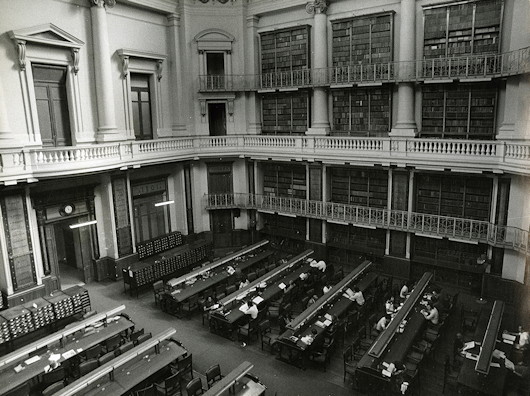
The National Library I had known during my adolescence was a different one. It stood on Mexico Street in the colonial neighbourhood of Montserrat. The building was an elegant 19th-century palazzo originally built to house the state lottery but almost immediately converted into a library. Borges had kept his office there when he was appointed director in 1955, when ‘God’s irony’, he said, had granted him in a single stroke ‘the books and the night’. Borges was the fourth blind director of the library, a curse I’m intent on avoiding. It was to this building, during the 1960s, that I used to go to meet Borges after school and walk him back to his flat, where I would read stories by Kipling, Henry James and Robert Louis Stevenson to him. After he became blind, Borges decided not to write anything except verse, which he could compose in his head and then dictate. But some ten years later he went back on his resolution and decided to try his hand again at a few new stories. Before starting, Borges wanted to study how the great masters had gone about writing their own. The result was two of his best collections, Doctor Brodie’s Report and The Book of Sand.
The library I discovered half a century later was lodged in a gigantic tower designed in the brutalist style of the 1960s. Borges, passing his hands over the architect’s model, dismissed it as ‘a hideous sewing machine’. The building is supposed to represent a book lying on a tall cement table, but people call it the UFO, an alien thing landed among pretty gardens and blue jacaranda trees. […]
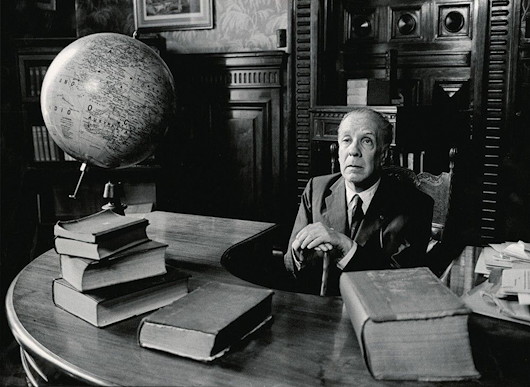
In my adolescence, I tried to write, no doubt under the influence of Borges, a few fantastical stories, now fortunately lost. One of them was about an unbearable know-it-all to whom the devil, in exchange for I don’t recall what, entrusted the overseeing of the world. Suddenly, this oaf realises that he has to deal with everything at once, from the rising of the sun to the turning of every page of every book, and the falling of every leaf, and the coursing of every drop of blood in every vein, and he is crushed by the inconceivable immensity of the task.
I had wanted to try to put my ideas about reading and libraries into action ever since I received my first books. Now I have got my wish with a vengeance. I have never in my life done anything as demanding and overwhelming as directing the National Library of Argentina. I have become, from one day to the next, an accountant, technician, lawyer, architect, electrician, psychologist, diplomat, sociologist, specialist on union politics, technocrat, cultural programmer and, of course, librarian. I hope that, time and Argentinian politics permitting, I’ll be able to start a few things that may allow us to have, in the not too distant future, a national library we can be proud of.
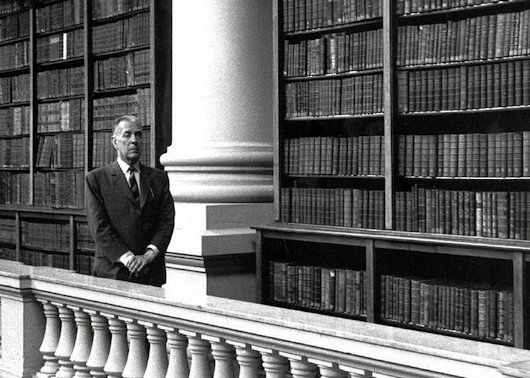
How Not to Build a Library
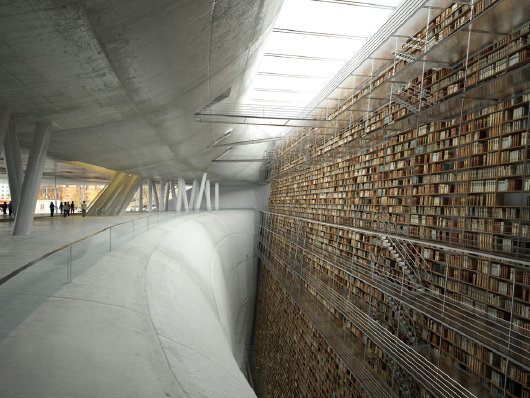
This computer-generated image has been doing the rounds on a variety of blogs across the internet. It depicts one of the numerous proposals for the extension of the Stockholm Public Library, this one drafted by a team from the Paris-Val de Seine architecture school. Over at the Long Now Blog, Alexander Rose calls it “awesome” and says “This design seems like it would lend itself well to a 10,000 year library”. As a monument this design is impressive — perhaps intimidating is the more appropriate word — but as a library it’s hard to conclude it would be anything other than a complete and total failure. And as for lasting 10,000 years, all those walkways to access the books look exceptionally brittle — I doubt they’d last a hundred years let alone ten thousand. (more…)
The Finest Library in All New York
Or is it in all the New World?
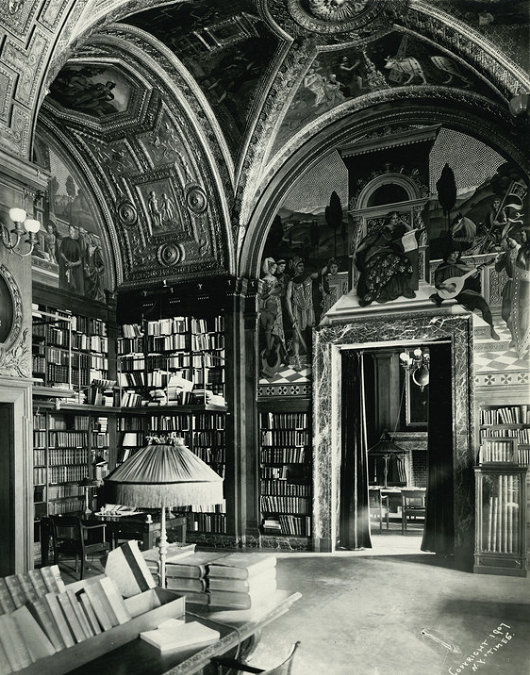
I do miss my two libraries in Manhattan, the Society Library on 79th Street and the Haskell Library at the French Institute on 60th. Neither of them, however, are fit to shine the boots of the library of the University Club on 54th & Fifth. Architecturally and artistically, it is undoubtedly the finest library in New York. But does it have an equal or a better in all the New World? The BN in BA certainly isn’t a competitor.
The University Club Revisited
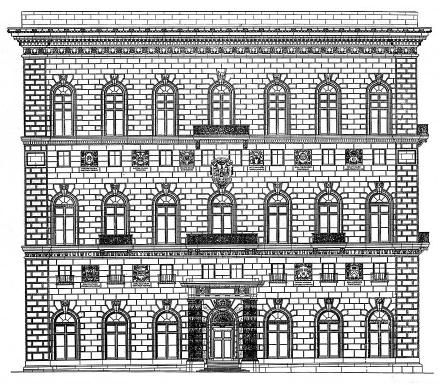
I received such complaints regarding my opinion of the University Club that I offer up these images as a peace offering. Above, an elevation of the 54th St façade.
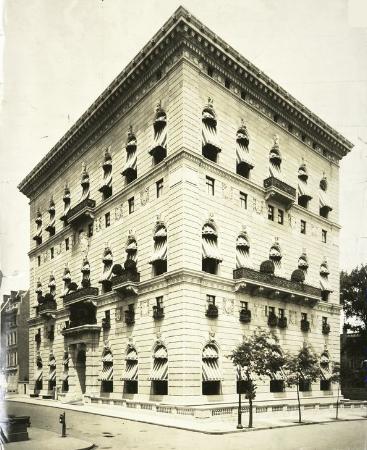
A view from Fifth Avenue.
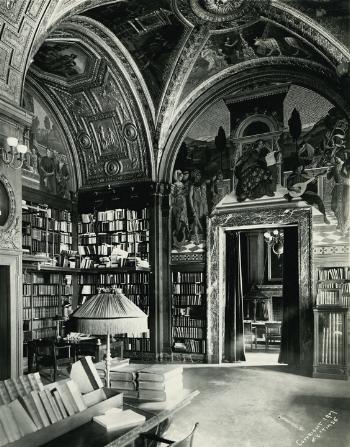
The oft-praised library.
Search
Instagram: @andcusack
Click here for my Instagram photos.Most Recent Posts
- Telephone Kiosk No. 2 May 15, 2024
- The last of its vintage May 15, 2024
- Letters Patent May 8, 2024
- Bicycle Rack April 29, 2024
- Burns Tower April 19, 2024
Most Recent Comments
Book Wishlist
Monthly Archives
Categories


